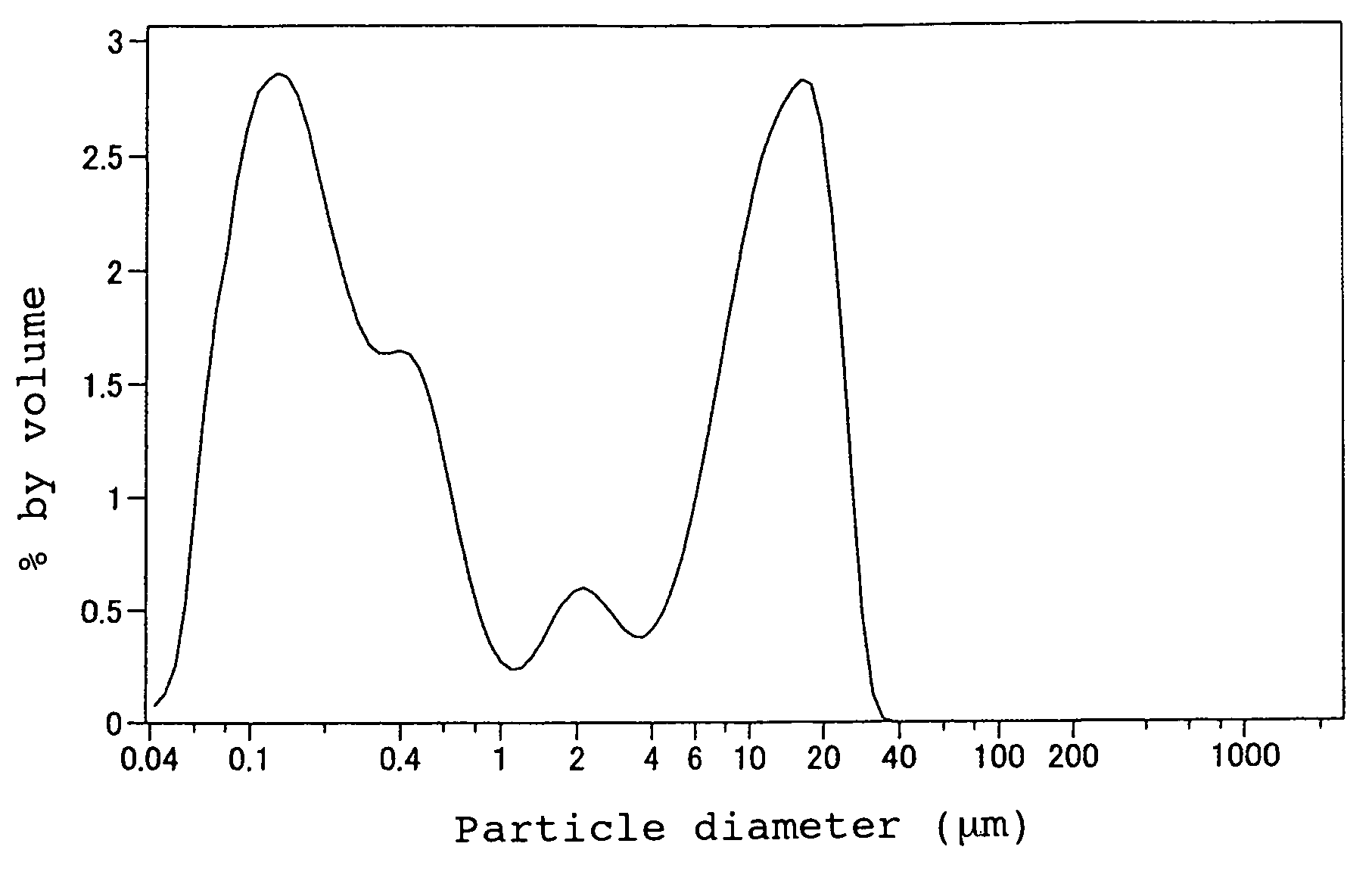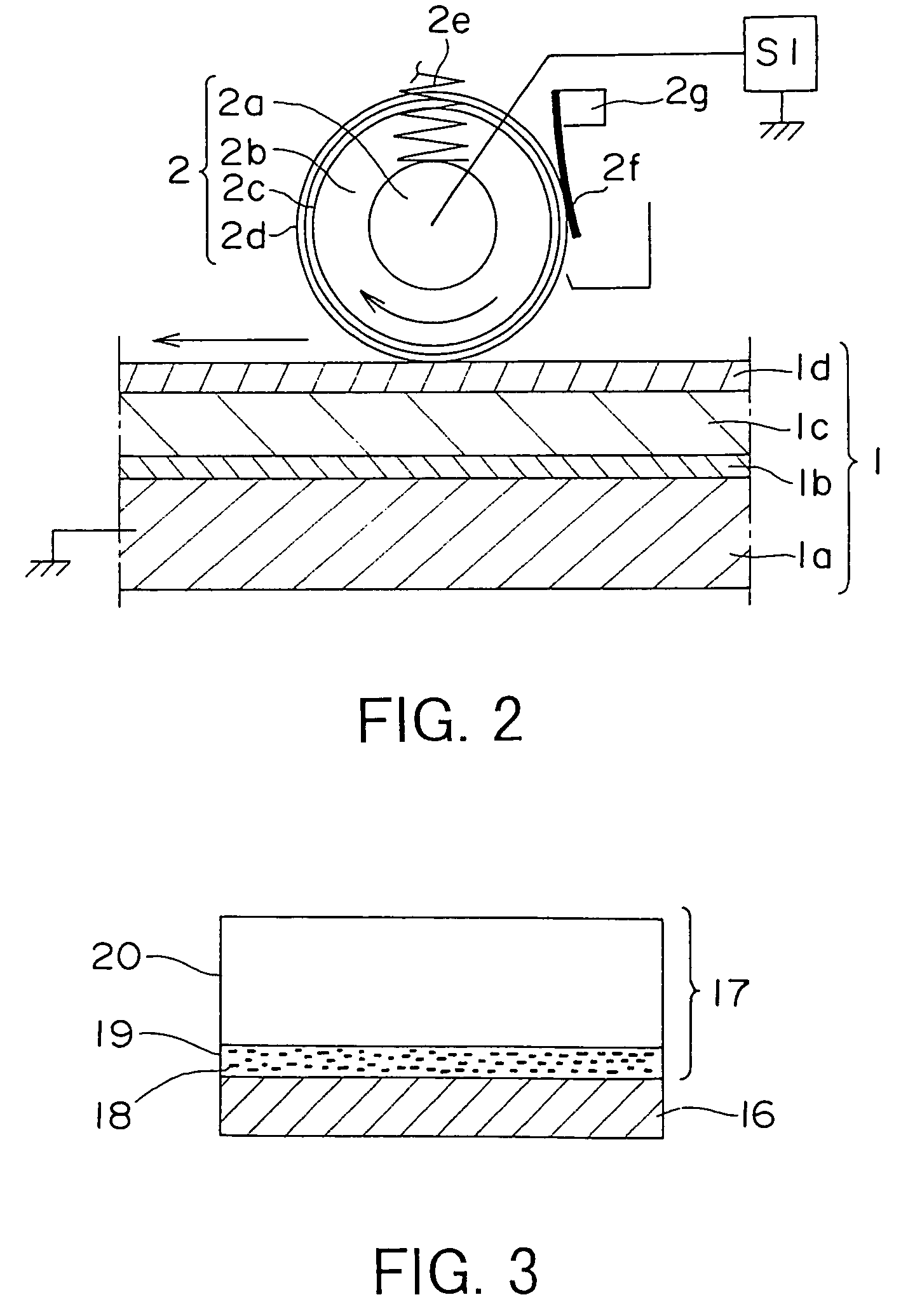Silica fine particle, toner, two-component developer and image forming method
a technology of toner and silicon, applied in the direction of instruments, silicon compounds, silicon oxides, etc., can solve the problems of difficult downsizing affecting the durability and stability of the whole apparatus, and the surface of the photosensitive member is apt to wear away, so as to prevent fogging, excellent transferability, and excellent durability and stability
- Summary
- Abstract
- Description
- Claims
- Application Information
AI Technical Summary
Benefits of technology
Problems solved by technology
Method used
Image
Examples
production example 2
FOR ORGANIC FINE POWDER
[0324]Hydrophobic treatment was carried out on the crude silica in Production Example 1 at a slightly lower temperature than that in Production Example 1. And then cracking, classification, and the control of particle diameter were carried out to obtain silica fine particles (3) (number average length of primary particles of 40 nm, actually measured BET specific surface area of 72 m2 / g).
production example 3
FOR ORGANIC FINE POWDER
[0325]Hydrophobic treatment was carried out on the crude silica in Production Example 1 at a slightly higher temperature than that in Production Example 1. And then cracking, classification, and the control of particle diameter were carried out to obtain silica fine particles (4) (number average length of primary particles of 40 nm, actually measured BET specific surface area of 68 m2 / g).
production example 4
FOR ORGANIC FINE POWDER
[0326]Crude silica was produced in the same manner as in Production Example 1, and then hydrophobic treatment and cracking were carried out on the crude silica in the same manner as in Production Example 1 to obtain silica fine particles (5) (number average length of primary particles of 40 nm, actually measured BET specific surface area of 78 m2 / g).
PUM
| Property | Measurement | Unit |
|---|---|---|
| Length | aaaaa | aaaaa |
| Length | aaaaa | aaaaa |
| Length | aaaaa | aaaaa |
Abstract
Description
Claims
Application Information
 Login to View More
Login to View More - R&D
- Intellectual Property
- Life Sciences
- Materials
- Tech Scout
- Unparalleled Data Quality
- Higher Quality Content
- 60% Fewer Hallucinations
Browse by: Latest US Patents, China's latest patents, Technical Efficacy Thesaurus, Application Domain, Technology Topic, Popular Technical Reports.
© 2025 PatSnap. All rights reserved.Legal|Privacy policy|Modern Slavery Act Transparency Statement|Sitemap|About US| Contact US: help@patsnap.com



